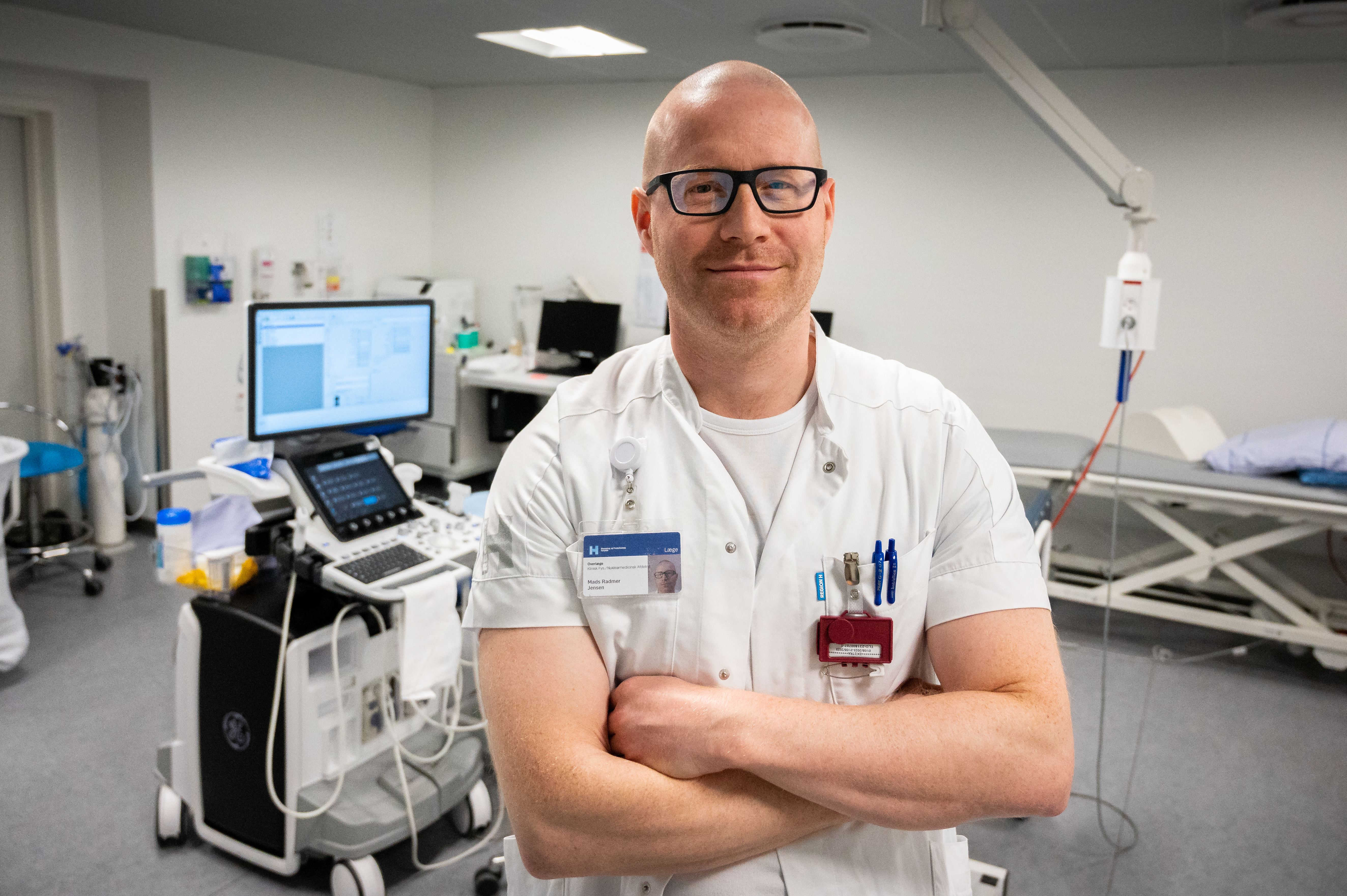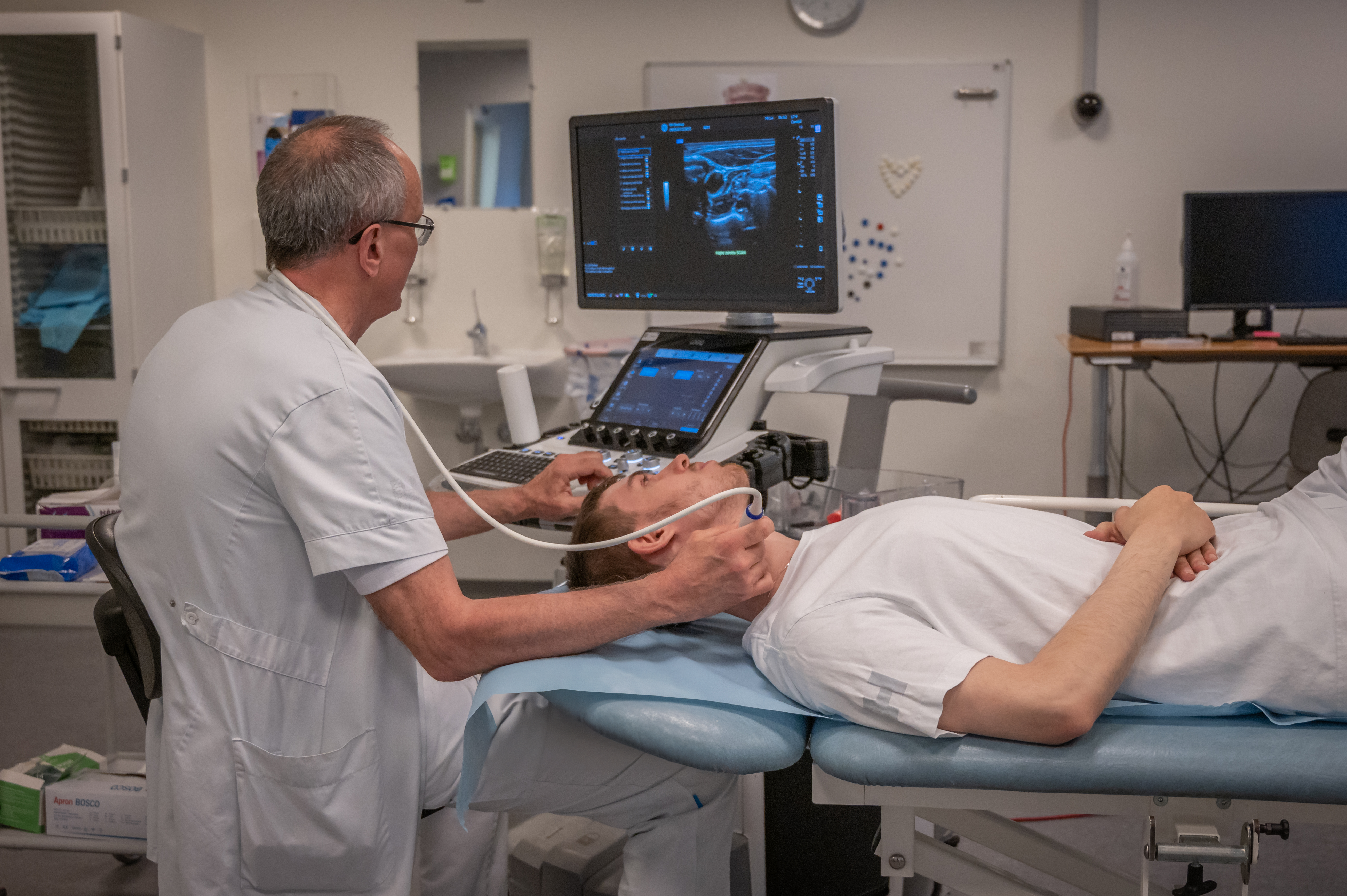Scan Assist on LOGIQ™ E10 contributes to quality assurance, more comparable ultrasound examinations, and improved diagnostics
Improved quality assurance and significant time savings. These are the experiences of the Department of Clinical Physiology and Nuclear Medicine at Rigshospitalet, Glostrup, and Bispebjerg Hospital, which utilize the Scan Assist feature on GE HealthCare's LOGIQ E10 ultrasound scanner to preprogram examinations of the thyroid gland, carotid arteries, and renal arteries, among others.
Some ultrasound scans are more challenging to perform than others, and the examination for narrowing of the renal arteries is among the difficult ones. This examination is a specialized discipline within vascular ultrasound and consists of no less than 16 sub-examinations in the evaluation of selected patients with high blood pressure.
"The examination is technically demanding and consists of many elements. Therefore, it is a huge advantage that with the built-in Scan Assist feature on the LOGIQ E10 ultrasound scanner, we can create a well-structured workflow where we have defined the individual steps and specific technical settings in advance."
This means that the ultrasound scanner adjusts itself correctly during the procedure and takes care of naming all the images. When freezing an image, the scanner automatically selects the correct measurement for the respective sub-examination. This saves both a lot of mouse clicks and a significant amount of time. When we talk about the examination of narrowing of the renal arteries, I can typically reduce the time by 30-50 percent, even though I am already experienced in performing such examinations," explains Senior Consultant Mads Radmer Jensen from Bispebjerg Hospital, who has been conducting advanced examinations for the past seven years.
"I trained under Ulrik B. Andersen at Rigshospitalet in Glostrup, who introduced Doppler ultrasound scans of renal arteries in Denmark. When we had to invest in a new scanner here at the hospital, I was naturally inspired by how Ulrik used his LOGIQ E10 with Scan Assist to develop workflows for various types of examinations.
"The ultrasound scanner produces really good images, but Scan Assist is a unique feature, and it was crucial for my choice. In my opinion, others cannot offer something similar with the same level of detail," explains Mads Radmer Jensen.
Workflow solutions for carotid arteries and thyroid glands
The departments in Glostrup and Bispebjerg perform Doppler ultrasound examinations of renal arteries on patients from all hospitals in the Capital Region and Zealand Region. According to Ulrik B. Andersen, there will soon be a need to conduct more examinations because new guidelines from the Danish Hypertension Society recommend ultrasound over the traditionally used indirect renography method in Denmark. Ultrasound has long been recommended as the standard method in other countries.
"My workflow can be stored on a regular USB drive, and I am happy to share it with colleagues around the country when the need arises. However, it naturally requires mastery of the examination and ownership of a LOGIQ E10 scanner."
"But the idea of developing well-thought-out, well-structured, and preprogrammed workflows using Scan Assist is by no means limited to highly complex ultrasound examinations. We have also created workflows for Doppler ultrasound examinations of the carotid arteries and ultrasound examinations of the thyroid gland. These examinations involve many different healthcare professionals, and with the use of workflows, we achieve consistency when everyone follows the same workflow. At the same time, we ensure that all the correct image documentation is saved.
"Everyone in the department is pleased with our workflows because they make the examinations easier and faster," says Ulrik B. Andersen.
Quality assurance of ultrasound examinations
Both Ulrik B. Andersen and Mads Radmer Jensen emphasize how the standardized approach can serve as both quality assurance for individual examinations and as a basis for more comparable examinations, leading to improved patient diagnostics.
"A workflow is essentially a checklist to ensure that all the necessary sub-examinations are performed in an ultrasound examination. It automatically guides you through each step, which is not only helpful and reassuring for those undergoing ultrasound training but also for the rest of us. In that sense, Scan Assist definitely contributes to quality assurance," says Mads Radmer Jensen, adding that the same applies to documenting an examination.
"By creating a standardized process, we have now ensured that everyone saves the necessary minimum image documentation that can support our descriptions and conclusions."
Comparable ultrasound examinations
Equally important is that a standardized ultrasound workflow makes the individual examination less dependent on the preferences of the person performing it.
"Having a workflow based on preprogrammed settings doesn't prevent a doctor, for example, from focusing on what they find particularly interesting. It's easy to pause a workflow if you want to save extra images. However, the standardized approach means that we can better compare different examinations. If I scanned a patient for a thyroid nodule a few months ago, and a colleague scans the same patient today, we can better measure the progression because the workflow ensures that the image material is comparable. I can't put a number on it, but it certainly provides greater diagnostic confidence," says Ulrik B. Andersen.
"Although we are a small country, there are different cultures and practices in our hospitals, but I can definitely recommend the use of workflows for the ultrasound examinations that are performed frequently. If you have a LOGIQ E10 in your department, feel free to call and borrow our workflows."
Read more about LOGIQ E10
See how Scan Assist works








